Major Fluorochrome
Compare filter sets by selecting the recommended/alternative set listed for each fluorochrome below.
Alexa Fluor 594 dye is a bright, red-fluorescent dye that can be excited using the 561 ㎚ or 594 ㎚ laser lines. For stable signal generation in imaging and flow cytometry, Alexa Fluor 594 dye is pH-insensitive over a wide molar range.
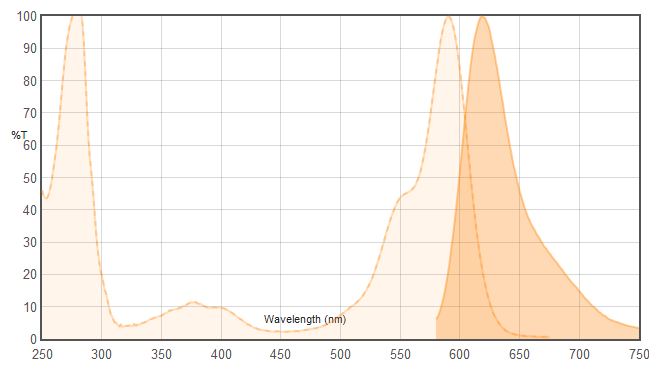
-> For more details, click here.
Fluorescent proteins, like EBFP, can be used as protein “tags” to study the subcellular localization of proteins and/or their translocation upon stimulation or as markers for transfection in transient and stable expression systems.
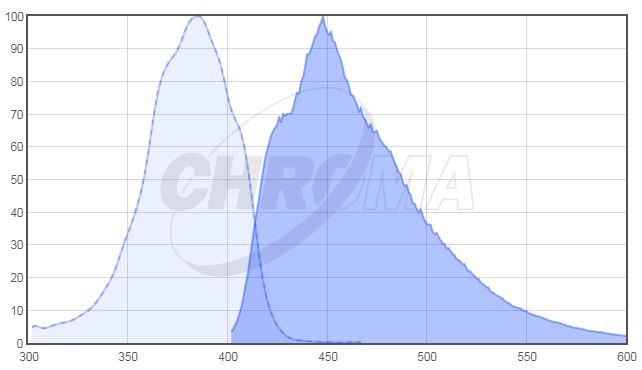
-> For more details, click here.
Cyan Fluorescent Protein (CFP) is a versatile biological marker for monitoring physiological processes, visualizing protein localization, and detecting transgenic expression in vivo. CFP can be excited by the 405 ㎚ laser line and is optimally detected at 485 ㎚.
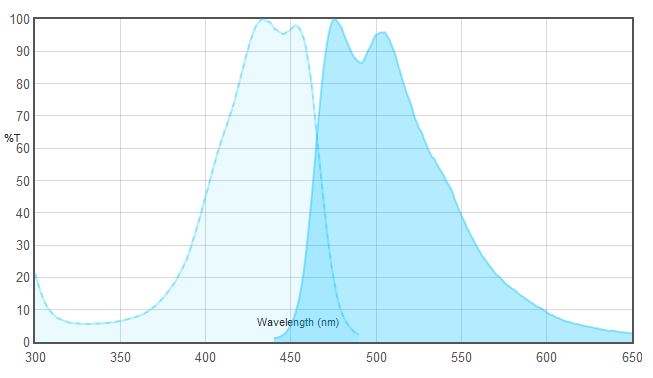
-> For more details, click here.
Cy5 dye is a bright, far-red-fluorescent dye that can be excited using the 633 or 647 ㎚ laser lines, and visualized Cy5 filter sets. In addition to immunocytochemistry applications, Cy5 is also commonly used to label nucleic acids.
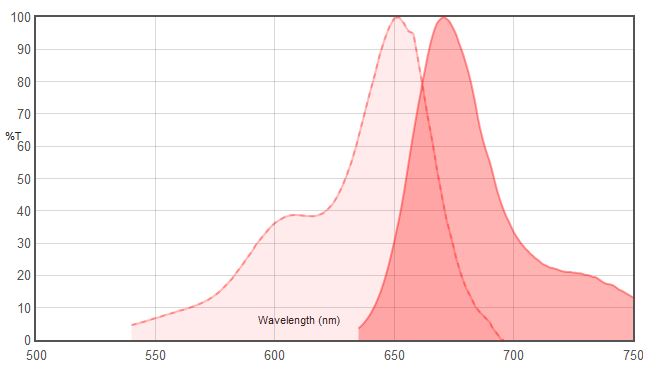
-> For more details, click here.
A variety of cyanine 5.5 (Cy5.5) dyes has been used to label biological molecules for fluorescence imaging and other fluorescence-based biochemical analysis. They are widely used for labeling peptides, proteins and oligos etc. Cy5.5 dyes are one type of the most common red fluorophores.
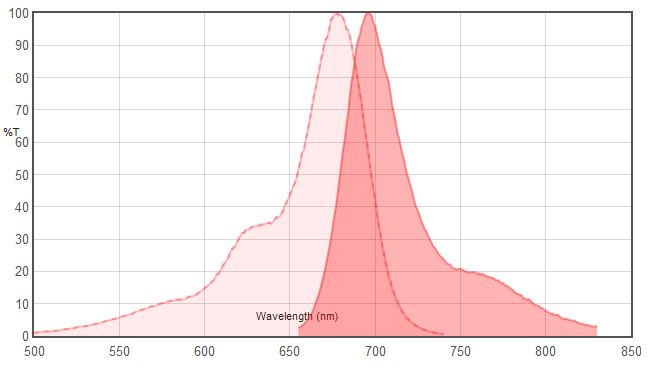
-> For more details, click here.
Cy7 is a near-IR fluor that is invisible to the naked eye (Excitation/emission maximum 750/776 ㎚). It is used in in vivo imaging applications, as well as the Cy7.5 dye.
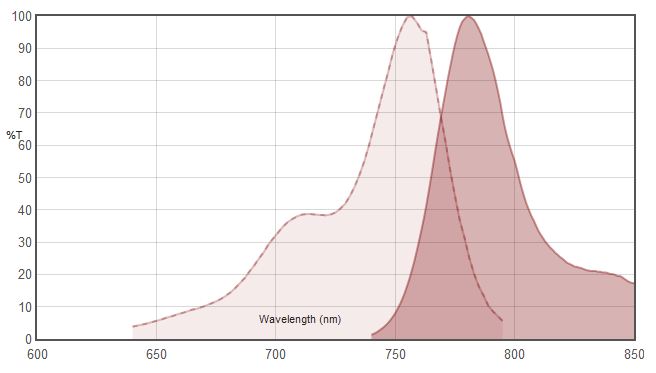
-> For more details, click here.
DAPI (4′,6-diamidino-2-phenylindole) is a fluorescent stain that binds strongly to A-T rich regions in DNA. It is used extensively in fluorescence microscopy. As DAPI can pass through an intact cell membrane, it can be used to stain both live and fixed cells, though it passes through the membrane less efficiently in live cells and therefore the effectiveness of the stain is lower.
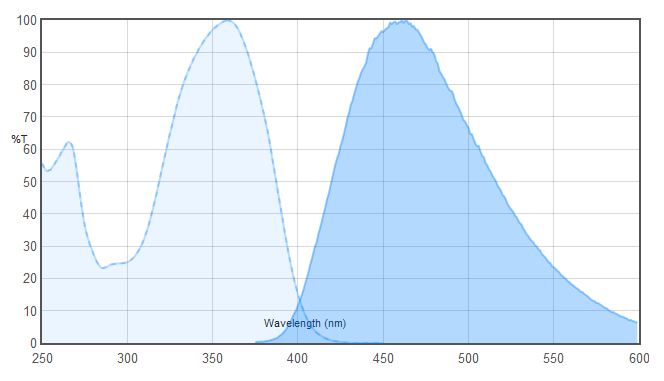
-> For more details, click here.
As with most fluorescent compounds, ethidium bromide is aromatic. Its core heterocyclic moiety is generically known as a phenanthridine, an isomer of which is the fluorescent dye acridine. Absorption maxima of EtBr in aqueous solution are at 210 ㎚ and 285 ㎚, which correspond to ultraviolet light. As a result of this excitation, EtBr emits orange light with wavelength 605 ㎚.
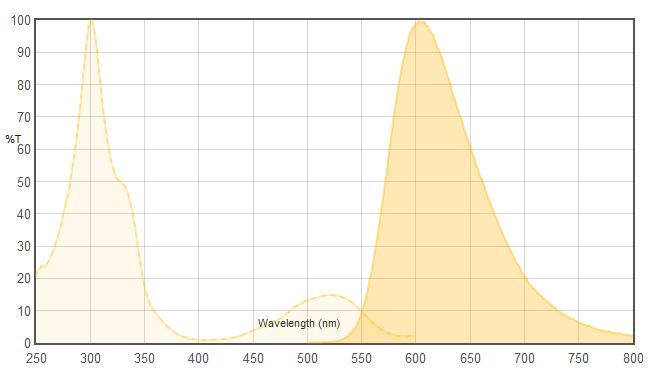
-> For more details, click here.
Fluorescein isothiocyanate (FITC) is a derivative of fluorescein used in wide-ranging applications including flow cytometry. FITC is the original fluoresce in molecule functionalized with an isothiocyanate reactive group (-N=C=S), replacing a hydrogen atom on the bottom ring of the structure. This derivative is reactive towards nucleophiles including amine and sulfhydryl groups on proteins.
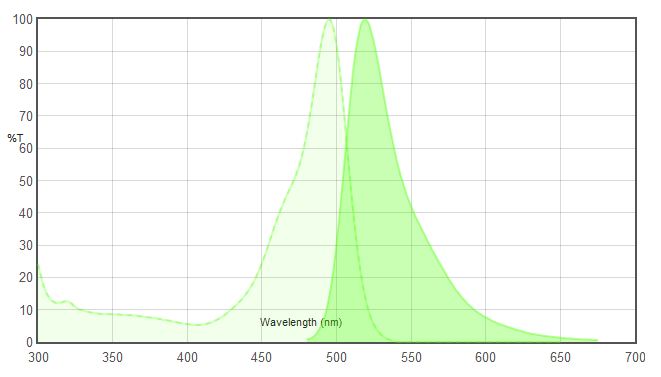
-> For more details, click here.
The green fluorescent protein (GFP) is a protein composed of 238 amino acid residues (26.9 kDa) that exhibits bright green fluorescence when exposed to light in the blue to ultraviolet range. Although many other marine organisms have similar green fluorescent proteins, GFP traditionally refers to the protein first isolated from the jellyfish Aequorea victoria. The GFP from A. victoria has a major excitation peak at a wavelength of 395 ㎚ and a minor one at 475 ㎚. Its emission peak is at 509 ㎚, which is in the lower green portion of the visible spectrum.
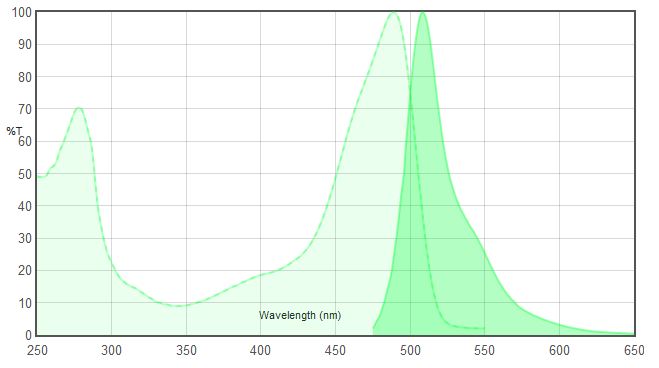
-> For more details, click here.
mCherry is a fluorophore (a fluorescent protein) used as a marker when tagged to molecules and cell components. mCherry and the majority of red fluorescent proteins derive from the protein drFP583 (commonly known as DsRed) isolated from Discosoma sea anemones, while other fluorescent proteins in the green range are often variants of jellyfish GFP. DsRed is a tetramer optimally excited at 558 ㎚ and has an emission maximum at 583 ㎚.
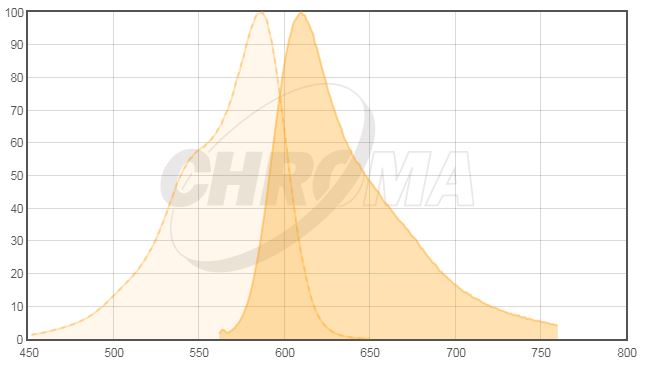
-> For more details, click here.
tdTomato is a genetic fusion of two copies of the dTomato gene (2) which was specifi cally designed for low aggregation (1). Its tandem dimer structure plays an important role in the exceptional brightness of tdTomato (Table I). Its excitation and emission maxima occur at 554 ㎚ and 581 ㎚, respectively (1). Because tdTomato forms an intramolecular dimer, it behaves like a monomer, and has been used successfully for N- and C- terminal fusions. It shows excellent photostability and its half-time (t0.5) for maturation is one hour at 37°C.
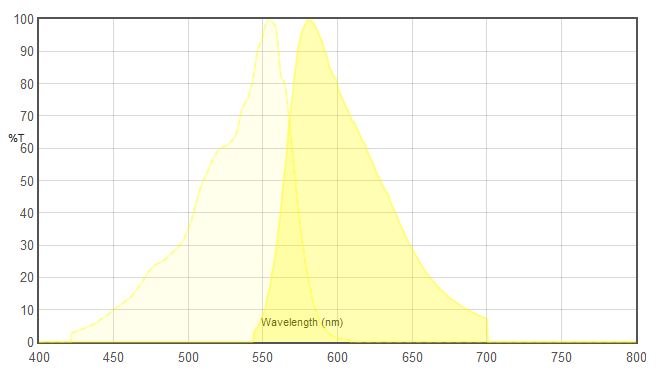
-> For more details, click here.
Tetramethylrhodamine (TRITC) is a bright orange-fluorescent dye with excitation ideally suited to the 532 ㎚ laser line. It is commonly conjugated to antibodies and proteins for cellular imaging applications.
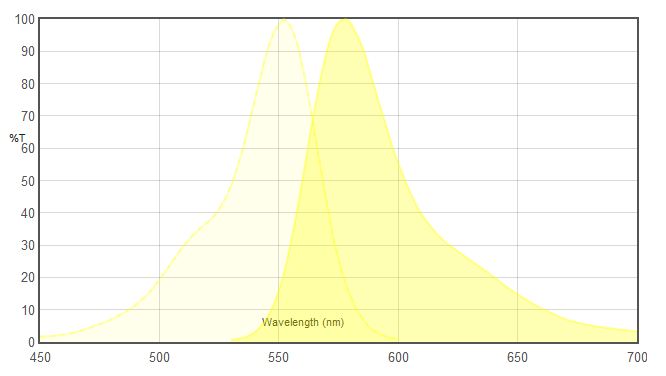
-> For more details, click here.
Yellow fluorescent protein (YFP) is a genetic mutant of green fluorescent protein (GFP) originally derived from the jellyfish Aequorea victoria. Its excitation peak is 514 ㎚ and its emission peak is 527 ㎚. Like the parent GFP, YFP is a useful tool in cell and molecular biology thanks to its properties useful for fluorescence microscopy.
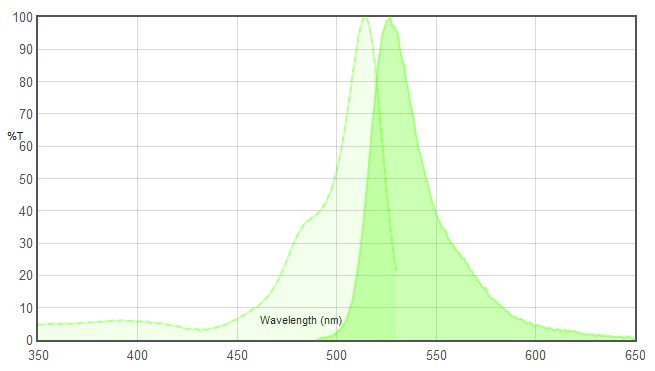
-> For more details, click here.
- If you need more information, please click fluorochrome. You can see each fluorochrome information and recommended filter sets.
- If you need other dye information, please contact us.
- Tel : 02-3473-4188~9
- Mobile : 010-6413-6235
- E-mail : jhjin@jnoptic.com
